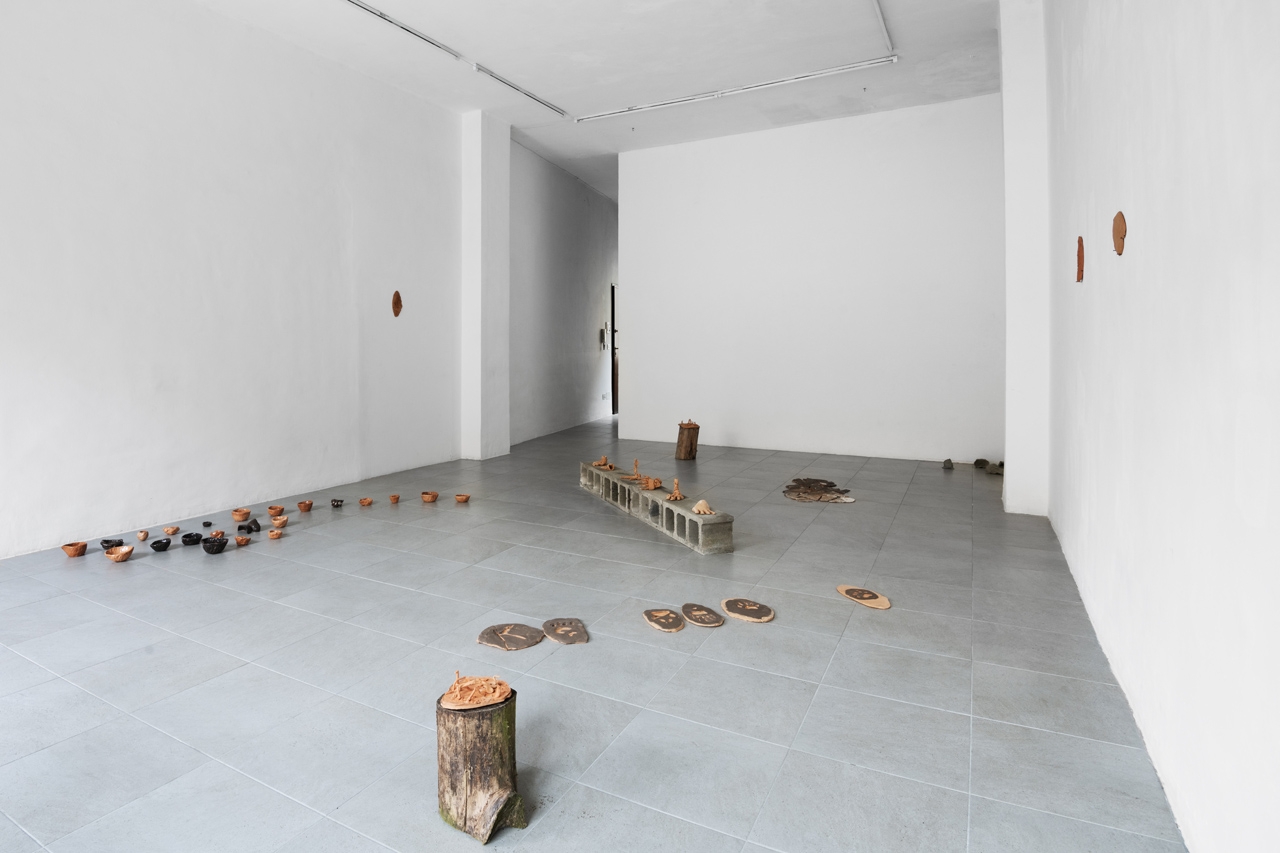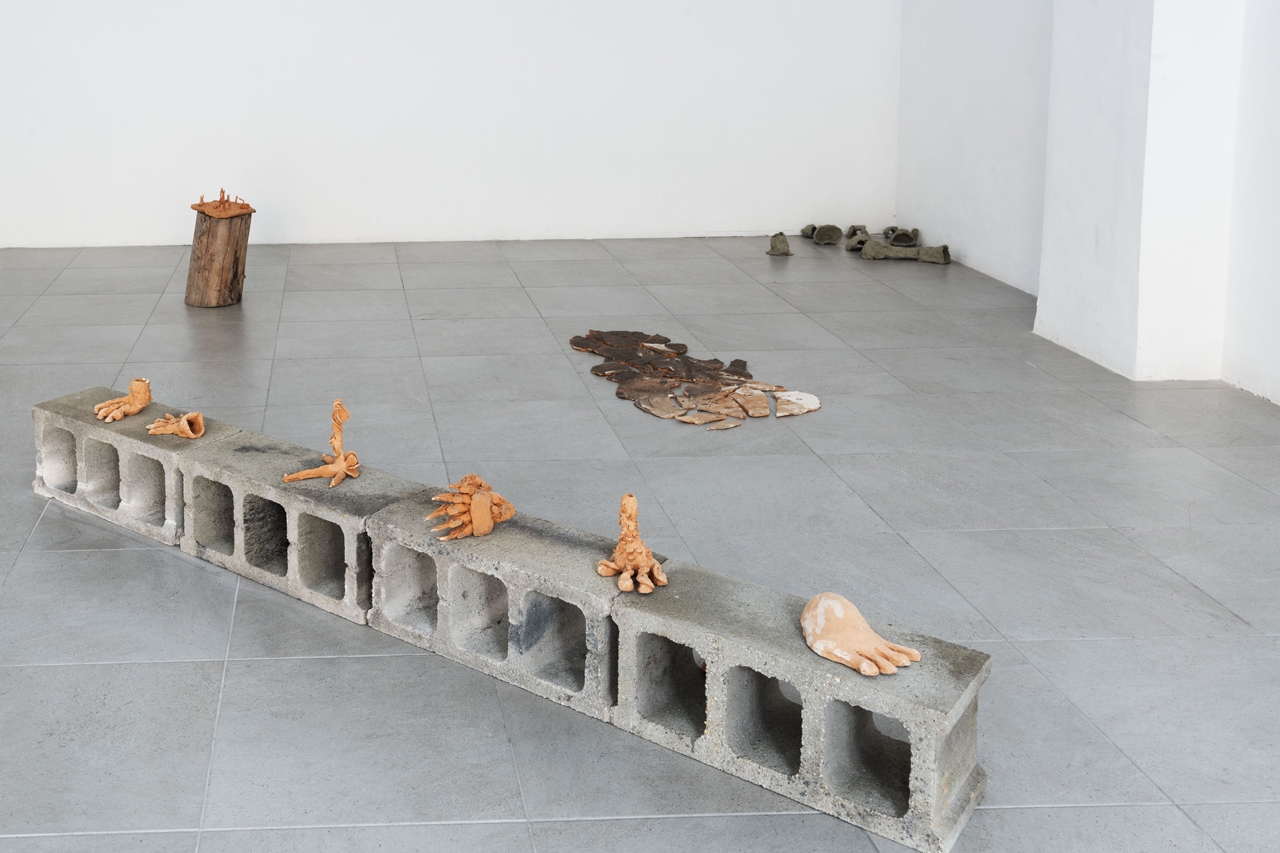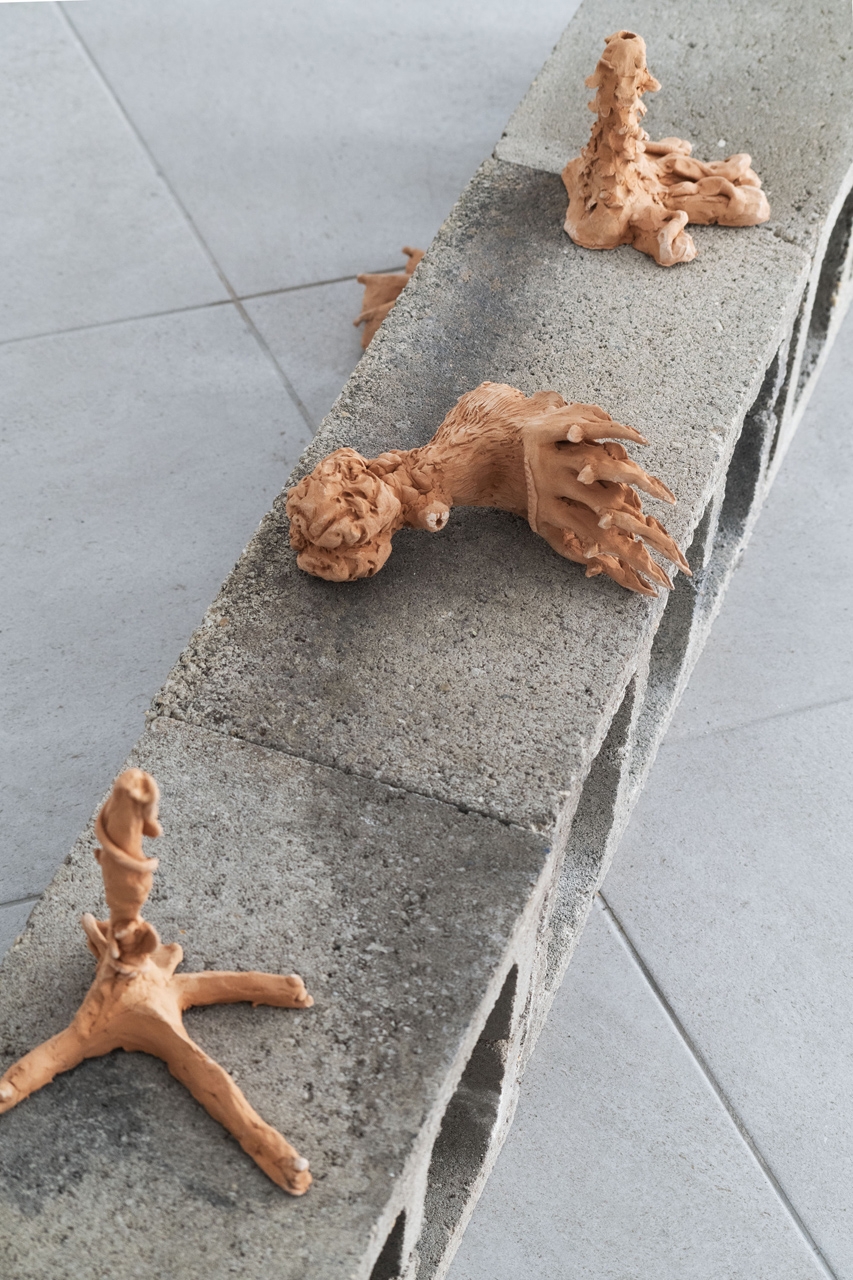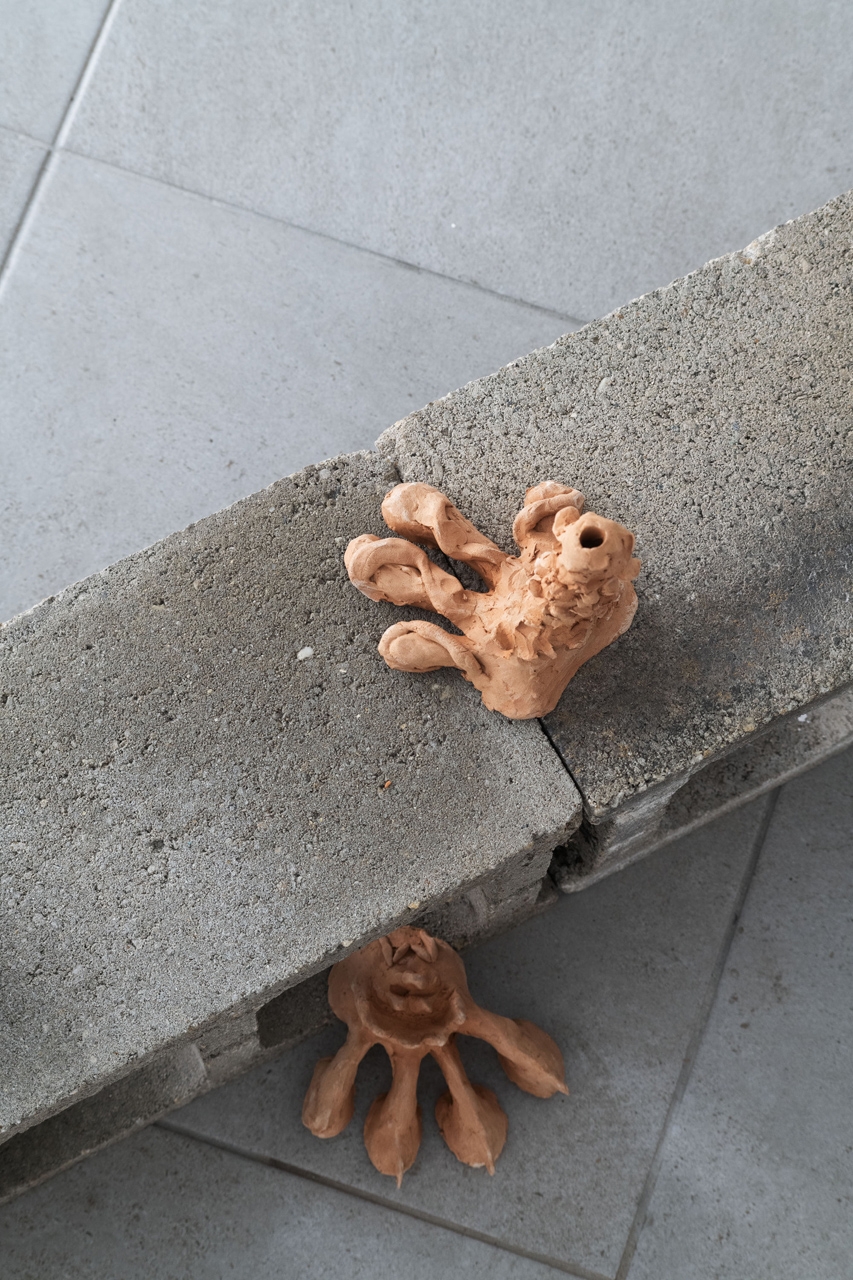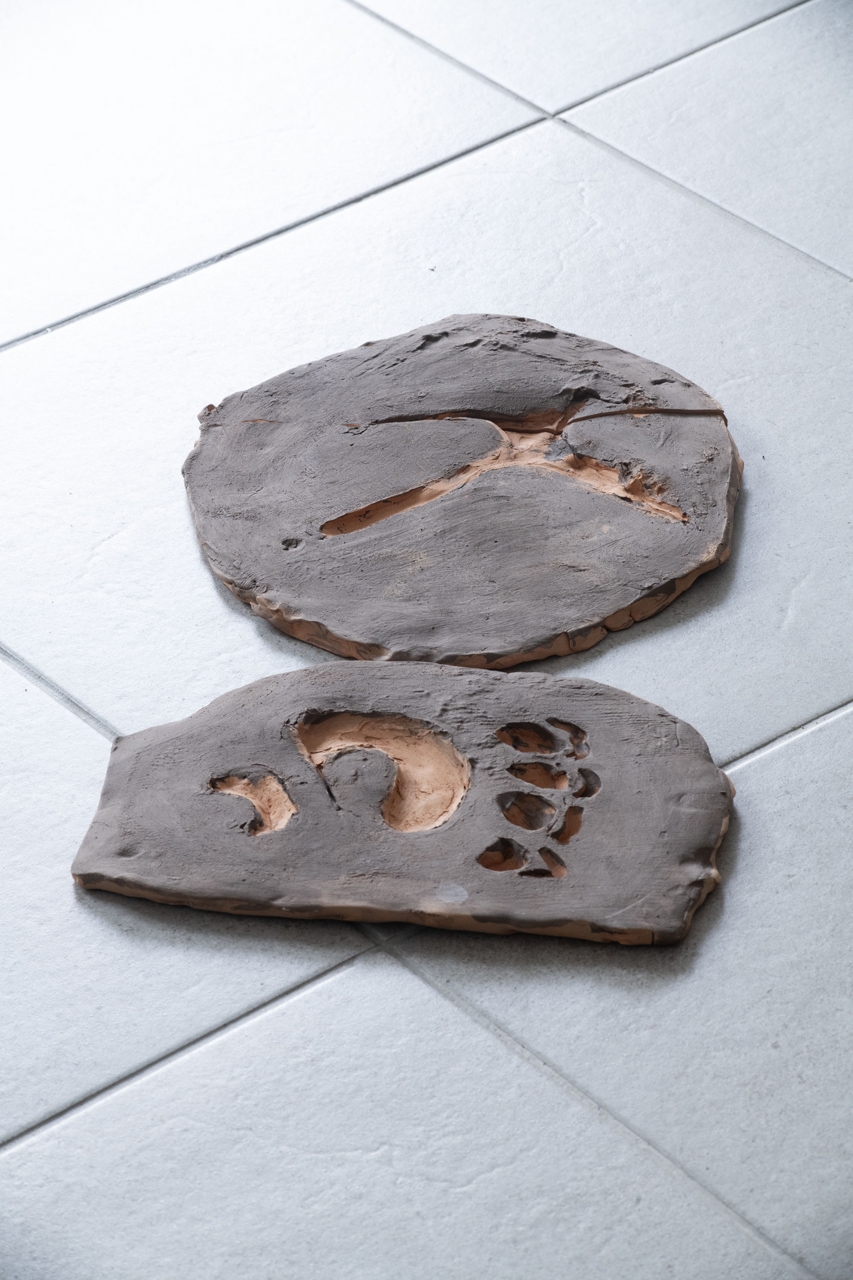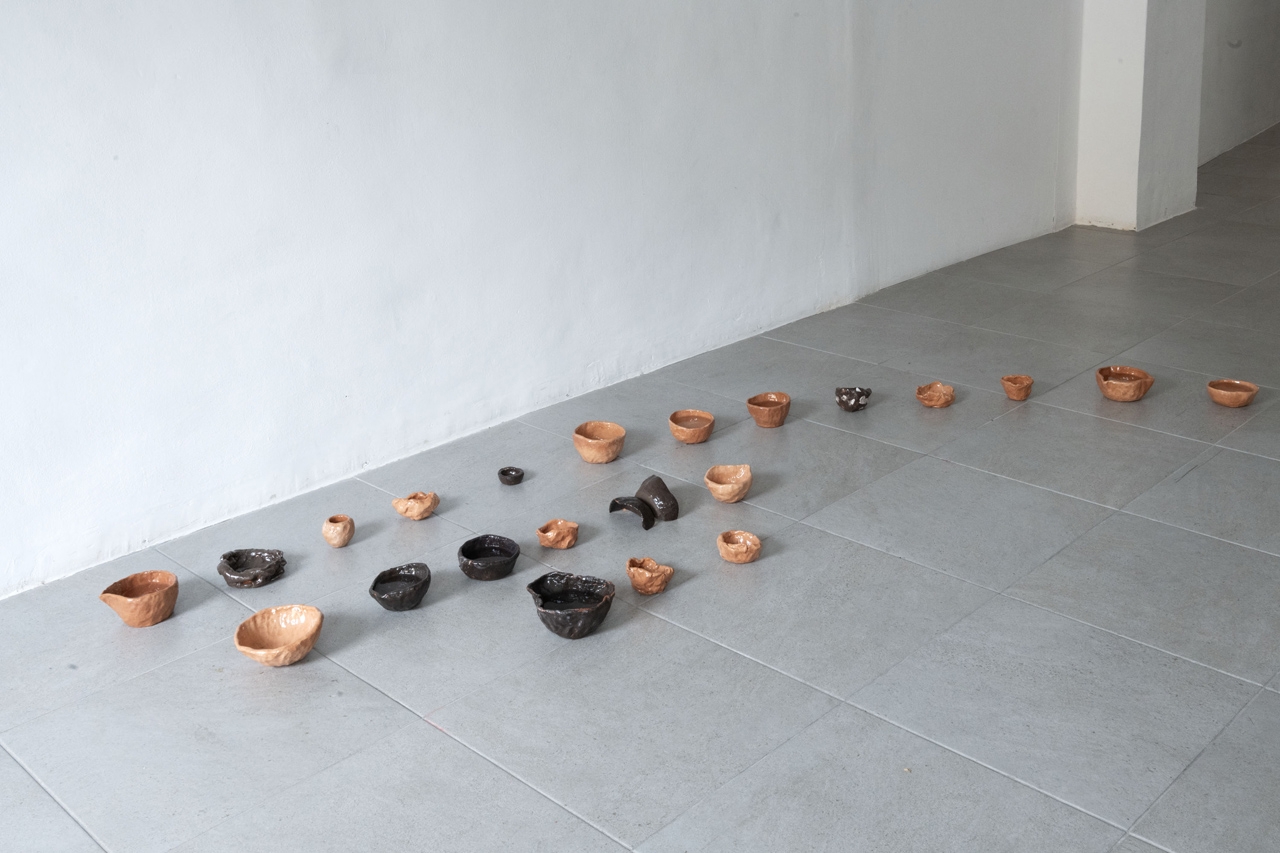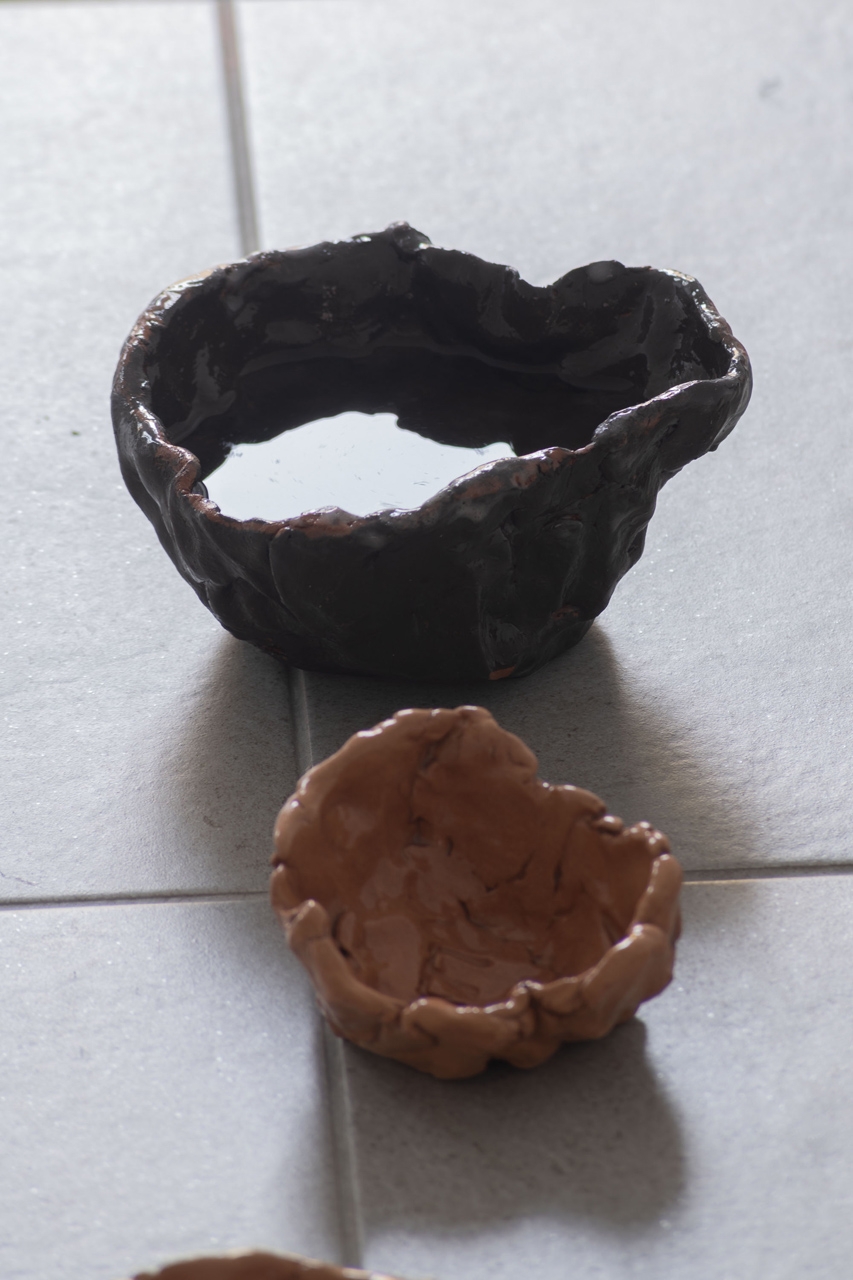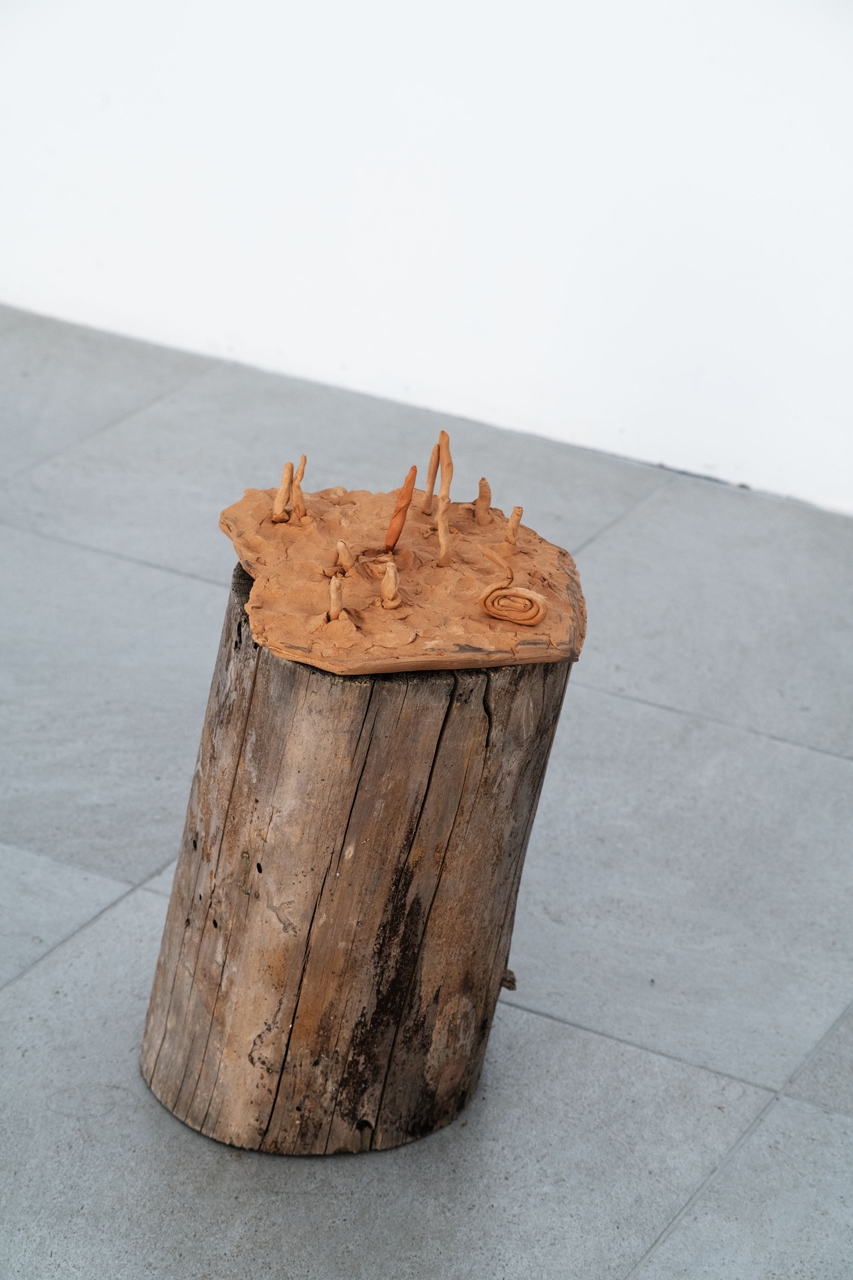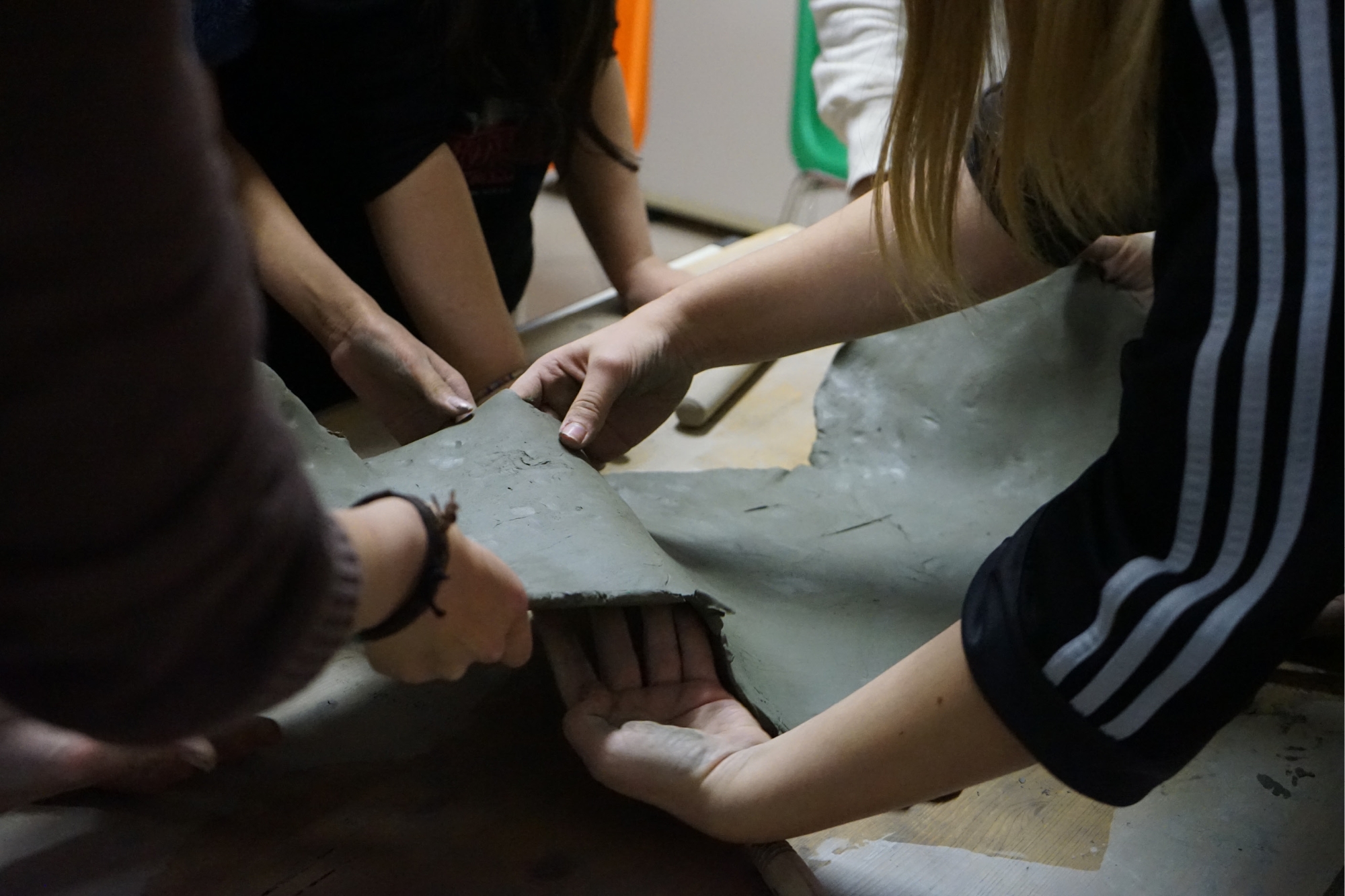Sara Cattin
Queste oscure materie20 June—14 July 2024
Opening: 20 june, h.19:00
Queste Oscure Materie è stato un percorso laboratoriale in territorio ignoto e vischioso per bambinɜ e ragazzɜ che hanno incontrato per la prima volta la manipolazione dell’immaginario che sta tra il fantastico e il reale, imparando dalle mani ciò che esse pensano e insegnano ad immaginare.
Queste Oscure Materie è anche il titolo della trilogia fantasy di Philip Pullman il cui primo volume La Bussola d’Oro introduce l’antico concetto del daimon, ovvero, nel romanzo, animali che accompagnano ogni persona dalla nascita alla morte, condividendo pensieri, esperienze e il complesso dell’intera anima.
Il progetto si è sviluppato in due laboratori paralleli di manipolazione dell’argilla, insieme all’Associazione Acmos, che nel quartiere torinese Barriera di Milano si occupa di inclusione e partecipazione creativa, e ad Area Onlus, che accoglie bambinɜ e ragazzɜ con disabilità motoria e neuro divergenza.
Nel romanzo, nessuno conosce la vera solitudine in quanto è impossibile separarsi dai propri daimon, che infatti mutano la loro forma animale in base al contesto, al paesaggio, al clima, alla necessità: quando Lyra Belacqua, la protagonista, parla in segreto al suo daimon, Pantalaimon diventa una falena, così da rendere intelligibili espressioni e segni del linguaggio labiale; quando si trovano nel deserto di ghiaccio del Nord, diventa un gatto delle nevi; quando lui e Lyra si riposano, torna ad essere un ermellino.
L’argilla non conosce l’errore. Come il daimon si stabilizza solo quando diventa adulto insieme alla sua persona, la materia argillosa può essere una presenza capace di accompagnare un mutamento quasi infinito.
Con lɜ bambinɜ e ragazzɜ di Area ci siamo concentratɜ sulla sensorialità del materiale, imparando semplici tecniche per poter sentire limiti e potenzialità della mano e del materiale in sé. Da una dimensione piatta si è lavorato in direzione di una tridimensionalità, ovvero verso ciò che, in campo terapeutico, viene definito il “tirarsi in piedi”.
Con lɜ partecipanti e operatorɜ di Acmos è stato fatto un percorso di esplorazione dell’impronta. Dal segno delle mani, a quello della stanza, alle impronte delle zampe in tutte le mutazioni di Pantalaimon. Abbiamo viaggiato tra la dimensione astratta e quella figurativa, in cui ognunǝ ha introdotto il proprio immaginario ibrido o animalesco, ispirato dagli anime, dal mondo reale e cinematografico.
I due gruppi hanno lavorato anche collettivamente passandosi materiali e manufatti. Ad Area abbiamo creato i colori che ad Acmos abbiamo usato nel processo di costruzione delle zampe; ad Acmos abbiamo creato la lastra segnata di linee con cui, ad Area, abbiamo creato un puzzle-paesaggio quasi impossibile da ricomporre.
Crediti:
ideazione e realizzazione: Sara Cattin
consulenza: Valentina Roselli e Caterina Giansiracusa
assistenza e documentazione durante i laboratori: Valentina Roselli, Caterina Giansiracusa e Alice Sprascio
assistenza tecnica: Scuola delle Terrecotte, Ronco Biellese (BI)
In collaborazione con

Almanac Inn è supportato da Fondazione Compagnia di San Paolo, Fondazione CRT and Regione Piemonte.

Queste Oscure Materie has been a workshop journey into an unknown and viscous territory for children and young people who encountered for the first time the manipulation of the imagination that lies between the fantastical and the real, learning from their hands what they think and teaching them to imagine.
Queste Oscure Materie is also the title of Philip Pullman's fantasy trilogy whose first volume, Northern Lights, introduces the ancient concept of the daimon, or, in the novel, animals that accompany each person from birth to death, sharing thoughts, experiences and the entirety of their soul.
The project has been developed in two parallel clay manipulation workshops, in collaboration with Associazione Acmos, which in the Barriera di Milano district of Turin focuses on inclusion and creative participation, and with Area Onlus, which supports children and young people with motor disabilities and neurodivergence.
In the novel, no one knows true solitude as it is impossible to be separated from their dæmons, which change their animal form based on the context, landscape, climate, and necessity: when Lyra Belacqua, the protagonist, secretly speaks to her daimon, Pantalaimon becomes a moth, making her lip language expressions and signs intelligible; when they are in the icy northern desert, he becomes a snow cat; when he and Lyra rest, he returns to being an ermine.
Clay does not know error. Just as a daimon stabilizes itself only when it becomes an adult together with its companion, clay can be a presence capable of accompanying an almost infinite transformation.
With the children and young people of Area, we focused on the sensoriality of the material, learning simple techniques to feel the limits and potentials of our hands and the material itself. From a flat dimension, we worked towards three-dimensionality, which in therapeutic terms is defined as 'standing up.'
With the participants and operators of Acmos, we explored the concept of the imprint. From the mark of the hands, to that of the room, to the paw prints in all of Pantalaimon’s mutations. We traveled between the abstract and the figurative dimensions, where everyone introduced their own hybrid or animalistic imagination, inspired by anime, the real world, and cinema.
The two groups also worked collectively by passing materials and artifacts between them. At Area, we created the colors that were used at Acmos in the process of constructing the paws; at Acmos, we created the slab marked with lines which was used at Area to create an almost impossible-to-reassemble puzzle-landscape.
Credits:
Conceived and realized by Sara Cattin;
Consultancy: Valentina Roselli and Caterina Giansiracusa;
Assistance and documentation during workshops: Valentina Roselli, Caterina Giansiracusa and Alice Sprascio;
Technical assistance: Scuola delle Terrecotte, Ronco Biellese (BI)
In partnership between

Almanac Inn is supported by Fondazione Compagnia di San Paolo, Fondazione CRT and Regione Piemonte.

